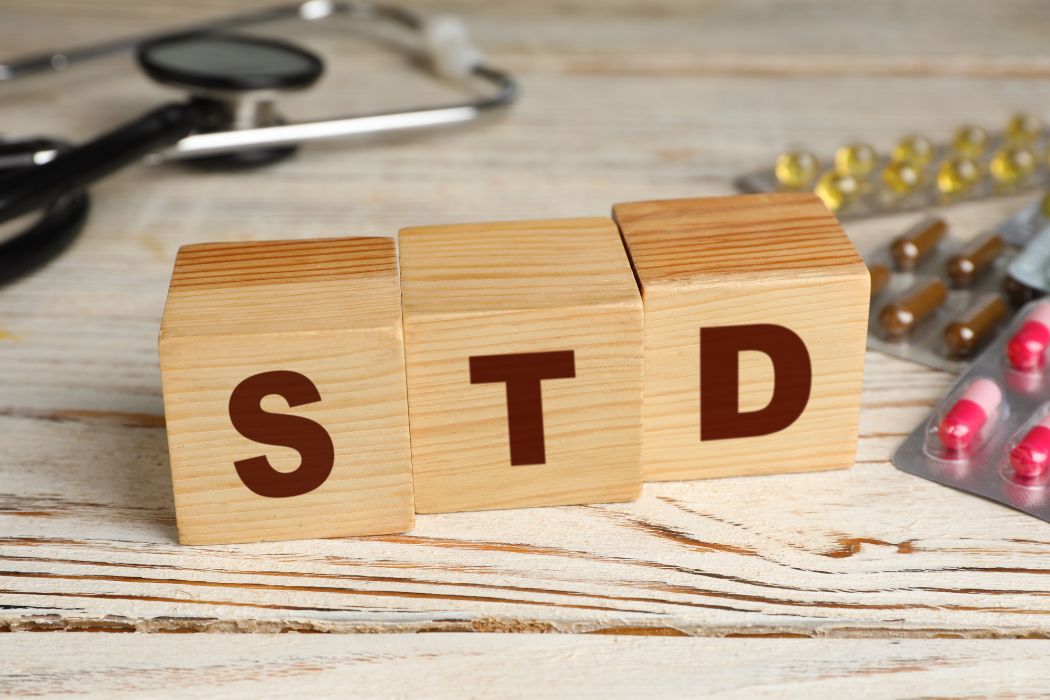ABC…it’s easy as STD…! It really is. Contracting an STD is much easier than you think. Just one night of passion between the sheets between you and someone without protection can leave you with an unwelcome bodily guest in the form of the STDs below.
Take a look at the most common STDs doing the rounds below.
Human Papillomavirus (HPV) (AKA the warty one)
HPV is much more common than people think. Extraordinarily, 30% of adults have never even heard of the virus, according to the charity Eve Appeal.
Most commonly transmitted through vaginal and anal sex, HPV is characterised as a small bump or group of warts and bumps in the genital area. In most cases (9 out of 10), it goes away on its own within a couple of years without causing severe health problems.
However, chaps, there’s still a slight possibility of developing cancer of the penis and anus, as well as cancer of the vulva and vagina, so it’s essential that you’re vaccinated.
Herpes (AKA the blistery/itchy one)
Herpes is spread through skin-on-skin contact, leaving a series of blistery and itchy lumps behind. It’s also possible to develop a fever, headache and swollen lymph nodes in the groin.
Having skin-to-skin contact with someone with herpes will inevitably lead to you catching the disease, so it’s important to have an open and honest conversation with your partner before you head to the bedroom, ensuring they’ve had themselves checked out.
This, of course, also applies to all of the nasty diseases on our list! Whilst it doesn’t cause serious health problems, the symptoms and self-confidence issues herpes can trigger aren’t worth living with chaps!
Syphilis (AKA the one with the sores)
When we think about syphilis, we think about 18th-century English cities when they made a name for themselves (and not a good one). However, the British Association of Sexual Health has reported a sharp rise in this Dickensian disease, with diagnoses tripling in the last 10 years.
Syphilis might sound like a formidable Egyptian queen’s name. Still, it’s far from glamorous – it’s extremely dangerous if left untreated, causing neurological damage and severely affecting other organs such as the heart.
The good news is that it’s easily treatable with antibiotics when found early, so I implore you, my friends, to get tested regularly.
Hepatitis B (AKA the fevery one)
With its flu-like symptoms of fever, aches and pains, it’s easy to mistake Hepatitis B for something not that serious. However, having unprotected sex with someone with the disease means you could be living with Hepatitis B.
As the symptoms sometimes don’t manifest until 3 months after infection, if you’ve got a new partner on the scene, testing and asking them about their sexual past before doing the deed is a must, lads.
Ease of treatment will depend on whether you are chronically suffering or if it’s short-term.
Trichomoniasis (AKA the one you may know as “trich”)
Often shortened to “trich”, trichomoniasis is the most common curable STD and affects chaps and chappettes alike. This isn’t a reason not to wrap your chap, though, as symptoms ranging from odorous discharge and itching to burning after ejaculation and discomfort during intercourse are all common.
An examination with your GP can quickly identify the presence of trich, and treatment is with anti-infective medications.
Chlamydia (AKA the silent one)
Chlamydia is most common in young people aged 15-24 and spreads through vaginal, oral or anal sex.
A silent presence, chlamydia rarely produces symptoms, making it difficult to keep under control across the world. Short-severe and long-term health problems can arise due to the disease, affecting fertility, chronic pelvic pain and inflammation of the liver capsule.
Whilst there may be a lot of throwaway joking out there where chlamydia is concerned, remember, it’s a disease. It’s serious. Stay protected.
Gonorrhoea (AKA the dischargy one)
Gonorrhoea – even the name sounds nasty, and it is. Symptoms commonly include a thick green or yellow discharge from the vagina or penis, though 1 in 10 people don’t experience symptoms.
Caused by bacteria and passed through unprotected vaginal, anal and oral sex, it’s treatable with injectable antibiotics (in some cases with tablets). Like herpes, it’s a little less serious than other STDs, but it can cause infertility and pelvic inflammatory disease in some women.
HIV (AKA the one that’s a precursor to AIDS)
Needing no introduction, HIV is something we will all have heard of. The acronym stands for human immunodeficiency virus, and it attacks the body’s immune system and can lead to AIDS (acquired immunodeficiency syndrome).
Whilst some people have no symptoms, fever, sore throat, sweats and generally feeling unwell can indicate that you might have HIV.
A simple blood test, saliva test or home testing kit can diagnose the disease and thankfully, contracting HIV and AIDS doesn’t have the Armageddon stigma it once used to.
Thanks to incredible research, living a long and healthy life with these diseases is possible. However, it’s better to avoid them altogether in the first place. There you have it, chaps. Make sure you’re on the lookout for any of the symptoms above, and more importantly, wrap your chap!

One Response